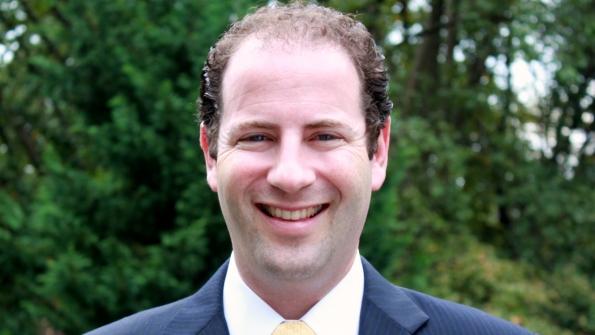NAB Slams NextGen TV Critics for ‘Protecting Their Turf'
Broadcaster group responds to last month's FCC meeting with NCTA, CTA and others

The National Association of Broadcasters is hitting back at critics who oppose its proposal to phase out the current ATSC 1.0 DTV over-the-air standard and transition to ATSC 3.0 (aka NextGen TV).
In February, the NAB filed a petition with the FCC to phase out ATSC 1.0 in two phases: In 2028, the top 55 DMAs (designated market areas) would be allowed to shut down 1.0, with the rest of U.S. DMAs doing so by 2030. The association said the current transitory phase, in which one station in a market hosts other stations also broadcasting 3.0, is preventing TV stations from taking full advantage of 3.0, which combines traditional radio frequency broadcast with internet protocol, allowing broadcasters to transmit higher resolution video, multichannel audio, advanced alerting and interactive advertising and programming.
In a blog post, NAB Chief Legal Officer and Executive Vice President Rick Kaplan criticized comments made by representatives of the Consumer Technology Association and NCTA—The Internet & Television Association during a meeting with FCC officials last month. ACA Connects, the American Television Alliance (ATVA), and the LPTV Broadcasters Association also attended that meeting, but Kaplan’s remarks were aimed squarely at CTA and NCTA. A summary of the meeting was filed with the FCC.
'Another Day, Another Reflexing Innovation-Blocking FCC Filing'
During the meeting, the CTA reiterated its longstanding position that the transition to ATSC 3.0 should remain voluntary and “a mandatory transition to ATSC 3.0 would harm consumers by imposing costs for consumers, stifle innovation, and levy unneeded regulations.”
Kaplan denigrated the group’s criticisms as “another day, another reflexive, innovation-blocking FCC filing from the usual suspects—cable lobbyists, legacy advocacy groups and industry players who oppose anything that might strengthen free, over-the-air broadcasting or challenge the dominance of their own outdated business models. Their latest attack on ATSC 3.0—the NextGen TV broadcast standard already delivering improved video, immersive audio, innovative interactive features and more—is as predictable as it is tired.”
“Let’s be clear,” Kaplan added, “these groups aren’t protecting the public, they’re protecting their turf.”
In response to the groups’ criticisms that phasing out 1.0 would be too costly for consumers, Kaplan noted that while broadcasters are working to strengthen free over-the-air TV, “our competitors are busy finding new ways to extract more money from viewers every month by diverting viewers to paid streaming services and apps they monetize.”
The professional video industry's #1 source for news, trends and product and tech information. Sign up below.
He accused CTA of using “faulty logic” when estimating the $80 price difference between TVs with NextGen TV capability and those without. Kaplan said such a claim ignores the fact “that those models often include other premium features that drive up the cost.
“For example, many of the TVs that include NextGen tuners also offer 8K video, higher-end display technologies, high refresh rates and upgraded speakers,” Kaplan said. “The manufacturers who are actively embracing ATSC 3.0—many of whom are ironically ‘represented’ by CTA—are delivering real value to consumers and helping to modernize free, over-the-air television. We should be celebrating this innovation—not undermining it.”
He also noted the irony in NCTA’s criticism that forcing consumers to adopt 3.0 would stifle innovation, adding that 3.0 allows broadcasters to innovate without the influence of “Big Tech.”
'What Are They Afraid Of?'
Kaplan also said cable TV shouldn’t be afraid that a mandated end to 1.0 would harm them and that they should support innovation that could help cable companies in turn, as long as they want to spend the money.
“Pay-TV providers built their empires reselling broadcast television,” he said. “Now they don’t want to invest in updates to stay current? Or are they afraid that a stronger over-the-air platform might allow more viewers to drop the costly monthly cable bill? As we know all too well, these companies simply do not want to pay for anything, whether its broadcasters’ signals, spectrum it uses to compete with licensed users or—as everyone knows—actual customer service.”
The broadcast industry is also among the most-efficient spectrum users, Kaplan said, adding that using spectrum for services other than traditional over-the-air TV should be welcomed.
He also addressed concerns from the LPTV Broadcasters Association, which also had representatives at the FCC meeting, noting that the NAB’s filing proposes that LPTV stations be exempted in the mandated transition. He also added that the NAB “has asked the FCC to allow non-commercial educational broadcasters more time to transition if needed. The answer isn’t to stall the entire industry. It’s to provide targeted support, not blanket inaction.”
He added: “It’s also rich for massive pay-TV companies to suddenly be advocating on behalf of small broadcasters. The irony here is not lost on anyone.”
Kaplan accused NCTA and CTA of being “yesterday’s gatekeepers” who are not working in the public interest. “Let’s stop pretending this ragtag opposition speaks for the public,” he concluded. “It’s not clear that NCTA or CTA know what the public interest is … the future is here.”
Tom has covered the broadcast technology market for the past 25 years, including three years handling member communications for the National Association of Broadcasters followed by a year as editor of Video Technology News and DTV Business executive newsletters for Phillips Publishing. In 1999 he launched digitalbroadcasting.com for internet B2B portal Verticalnet. He is also a charter member of the CTA's Academy of Digital TV Pioneers. Since 2001, he has been editor-in-chief of TV Tech (www.tvtech.com), the leading source of news and information on broadcast and related media technology and is a frequent contributor and moderator to the brand’s Tech Leadership events.

